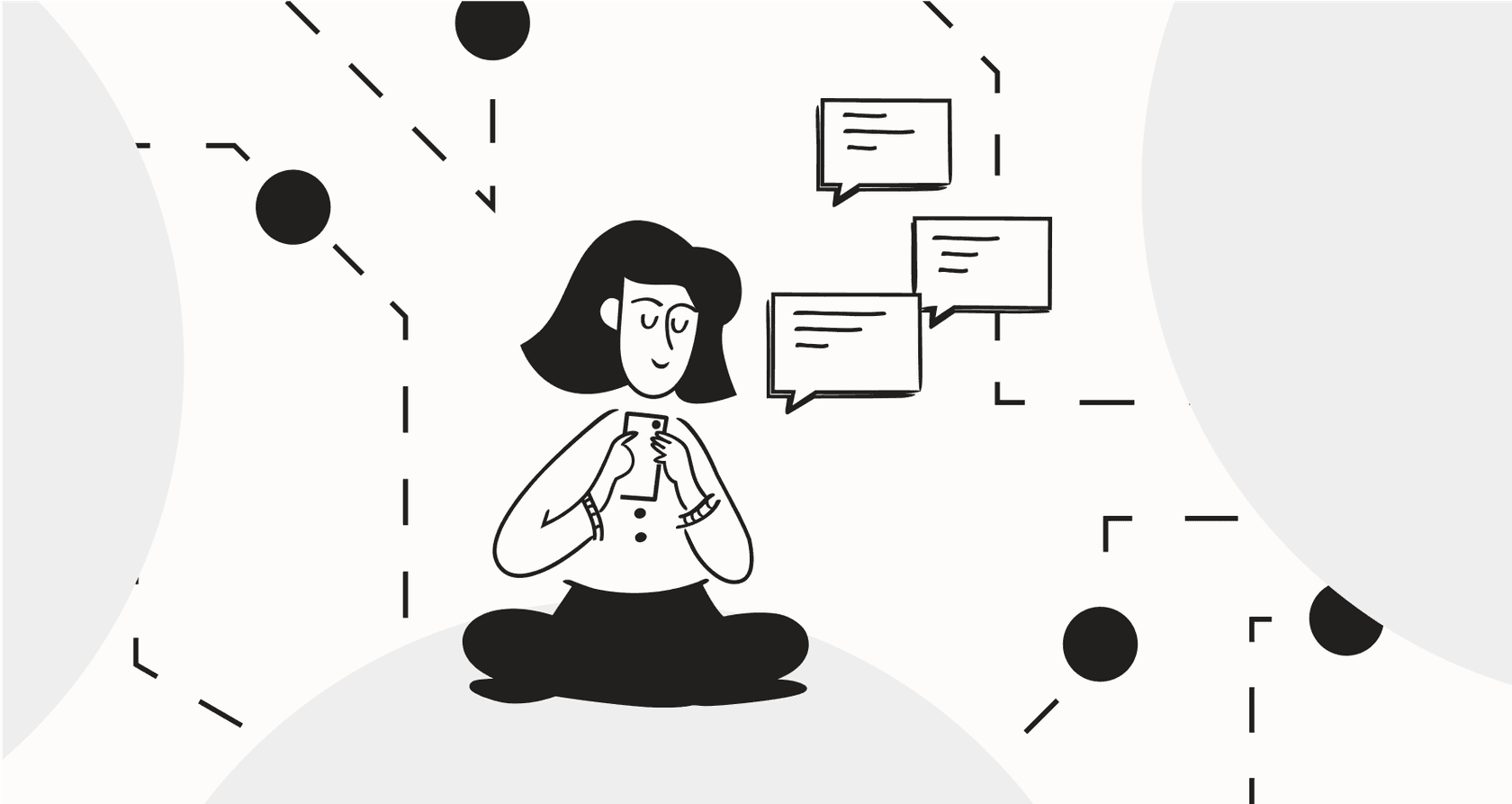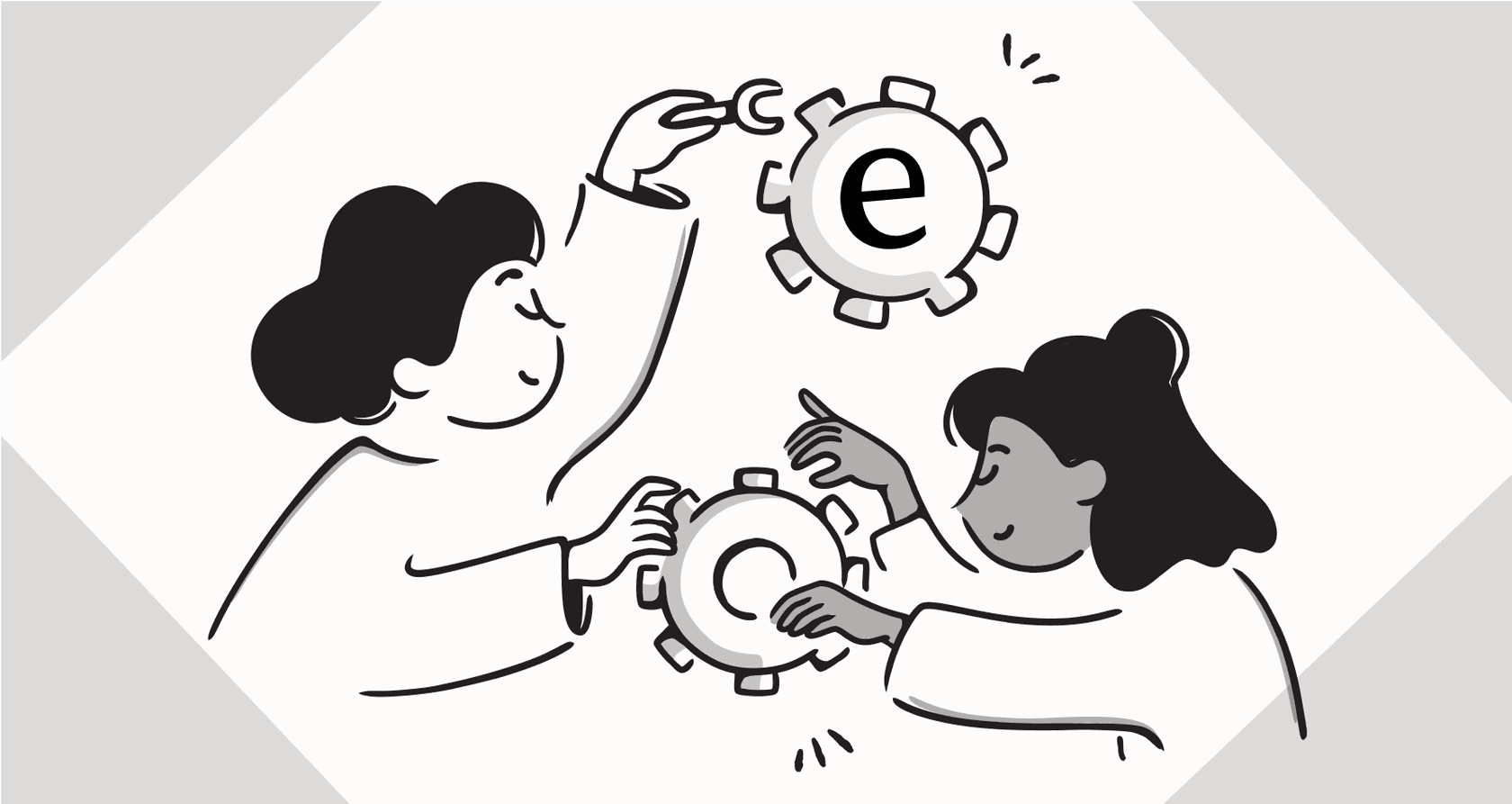
Forget the sci-fi movie scenes. An AI sales agent isn't some robot taking over your sales calls. Think of it more like a super-smart software tool designed to handle the repetitive stuff your sales team deals with every day. Imagine your reps finally getting free from endless data entry, figuring out which leads are hot, and sending out those first emails. They could actually spend their time building relationships and closing deals! That's the real promise of bringing an AI sales agent into your business.
This guide is here to walk you through exactly how to set one up for your own company. We'll cover everything, from figuring out what you want it to do to getting it hooked up with the tools you already use. We'll also touch on how platforms like eesel.ai can make this whole process way simpler, letting you add intelligent automation without needing to build something from scratch.
What is an AI sales agent?
Okay, so at its heart, an AI sales agent is just a software application that uses artificial intelligence (that includes things like machine learning and understanding natural language) to do tasks related to sales. But here's the cool part: unlike basic automation tools that just follow rigid instructions, these AI agents can look at data, learn from how they interact with people, and even make smart decisions without needing a human to approve every single thing.
Picture them as helpful, intelligent assistants or even independent workers for your sales team. They can tackle jobs like finding and figuring out if a lead is a good fit, sending out personalized follow-up messages, getting meetings scheduled, and even giving your human reps real-time tips or quick summaries of information. They can work quietly in the background or right alongside your team, basically making your human team members even better at their jobs, not replacing them entirely. As some put it, AI sales agents are "autonomous applications that analyze and learn from your sales and customer data to perform tasks with little or no human input."
Should you build your AI sales agent or use a platform?
When you start thinking about adding an AI sales agent, a big question usually pops up: should we try to build this ourselves from the ground up, or should we use a ready-made platform? Trying to build it yourself means you'll need serious tech skills, a lot of time, and plenty of resources – think data scientists, developers, and ongoing maintenance work. You get total control that way, but it costs a lot upfront and can be pretty complicated.
For most businesses, using a platform specifically made for AI is just a much more practical and faster way to go. These platforms usually come with AI models already built, connections to other tools, and interfaces that are easy to use. This cuts down big time on how long and how much it costs to get things running. They let you set up and launch powerful AI agents quickly, tapping into the expertise of companies that specialize in AI automation. Going with a platform means you can spend your energy on deciding exactly what you want your agent to do and teaching it well, instead of worrying about the tech stuff happening behind the scenes.
What you'll need to create your AI sales agent
Before you jump into actually building or setting up your AI sales agent, it's a good idea to get a few things ready. First, you need to be super clear on what you want the AI to do. Are you trying to automate the first response to leads, figure out which prospects are most promising based on certain things, book demo calls, or just handle common questions from customers? Write down the specific jobs and steps the AI will be responsible for. Make sure these goals fit with what your sales team is trying to achieve overall, whether that's getting more leads, answering people faster, or just being more productive. Knowing exactly what you want from the start will help you pick the right platform and set it up correctly so your AI agent actually makes a difference.
Next, you'll definitely need access to the right information. This means things like details about your customers, any sales scripts you use, product information, or records of past conversations with customers or leads. The quality and amount of this data are really important – they directly affect how well the AI can give accurate and helpful answers.
You should also figure out which sales and support tools your team uses regularly. Is it a specific CRM like Salesforce or HubSpot? A helpdesk like Zendesk, Intercom, or Freshdesk? Maybe communication tools like Slack or Microsoft Teams? Knowing this helps you pick a platform that can connect easily with what you've already got.
Finally, and this is a big one: make sure your sales team is on board. Talk to them about how this AI will help them. Getting their support and understanding how the AI fits into their day-to-day work is key to making sure it actually gets used and is successful.
Step-by-step: Creating your AI sales agent
Setting up an AI sales agent using a platform is usually a pretty logical process. It focuses more on configuring things and teaching the AI, not on writing complicated code. Here's a breakdown of how it typically goes:
Step 1: Figure out exactly what you want it to do
Start by getting really specific about the goals for your AI sales agent. What tasks are slowing down your human team? Pin down the exact jobs and workflows you'll hand over to the AI. Make sure these tasks line up with your bigger sales picture, like boosting the number of leads you handle or speeding up how quickly you respond. Being precise right from the beginning helps you choose the best platform and set it up correctly so your AI agent actually provides real value.
Examples of tasks the AI could handle include:
- Automatically replying to initial lead inquiries
- Qualifying prospects based on certain criteria you set
- Scheduling demo calls
- Answering common customer questions
Step 2: Pick the right platform
Choosing the right AI platform is a crucial step. Look for one that fits the goals you just defined, can connect with the tools you already use, lets you customize things how you need, and has clear pricing. Compare features, how they charge, and the support they offer to find the best match for your business.
Consider these factors when choosing:
- How easy it is to use
- How you train the AI
- What kind of automated actions it can do (like tagging, routing conversations, or making API calls)
- If it can grow with your business
While some CRM systems have AI features built in, platforms focused specifically on AI, like eesel AI, often give you more flexibility and can be more cost-effective. For instance, eesel AI uses pricing based on interactions, which can be more predictable than paying per agent, especially as your team gets bigger.
| Feature | CRM Built-in AI | Dedicated AI Platform (e.g., eesel AI) |
|---|---|---|
| Cost | Often tied to per-agent CRM cost, premium add-ons, potential usage fees | Often interaction-based, more predictable, potentially lower per-agent cost |
| Customization | Limited to CRM framework | More flexible, deeper customization of AI behavior and actions |
| Integration Flexibility | Primarily within CRM ecosystem | Designed for broad integration with many tools (CRMs, helpdesks, etc.) |
| Ease of Setup | May require complex CRM setup | User-friendly interfaces focused on AI configuration |
| AI Focus Depth | AI is one feature among many CRM functions | Core focus is on AI automation and performance |
Step 3: Give it the knowledge it needs
Your AI sales agent needs information to be helpful. You'll need to connect the platform to all your relevant data sources. Remember, the better and more complete this information is, the better the AI will be at giving accurate and useful answers.
Relevant data sources could include:
- Articles from your help center
- Internal documents (like stuff in Google Docs, Confluence, SharePoint, or Notion)
- Records of past sales chats or support tickets
- Frequently asked questions
- Product catalogs
Platforms like eesel AI make it easy to train the AI on many different types of sources and can even automatically sync updates, so your agent always has the latest information.
Step 4: Tell it how to act and what to do
This is where you customize your AI sales agent's personality and actions. You can define its tone and the way it talks so it sounds just like your brand. Set up rules for different situations – how should it answer common questions? When should it hand a conversation over to a human sales rep? How should it deal with leads that aren't a good fit?
You can also set up actions like:
- Automatically adding tags to leads
- Updating records in your CRM
- Scheduling events
- Doing custom things by connecting to other software (like checking an order status from your e-commerce platform)
Platforms like eesel AI give you detailed options for prompting the AI and customizing its actions, giving you a lot of control over how it behaves, way beyond just picking a basic tone.
Step 5: Connect it to your other tools
Now, link your newly set-up AI sales agent with the tools your team uses every single day. When everything is connected smoothly, the AI can easily get the data it needs, do things inside those systems, and fit right into your team's existing sales routines.
This usually means connecting it to:
- Your CRM (like Salesforce, HubSpot, Zoho, or monday CRM)
- Your helpdesk (think Zendesk, Intercom, Freshdesk, Gorgias, or Jira Service Management)
- Your communication apps (like Slack or Microsoft Teams)
eesel AI offers connections to over 100 different platforms, making it simple to plug the AI into your current setup.
Step 6: Test it out, tweak it, and launch
Before you let your AI sales agent loose on the world, test it thoroughly. Pretend you're a customer and go through different conversations and situations to make sure it answers correctly, does the right things, and knows when to ask a human for help.
Testing involves actions like:
- Chatting with the bot in a safe space
- Seeing how it would have responded to past customer tickets
- Asking confusing questions or asking about things the AI shouldn't know to see how it handles them
Based on your testing, make changes to the AI's training data or how you've configured it. Once you feel good about it, launch the AI agent. Maybe start with just a small group of users or for specific tasks before rolling it out everywhere. Keep an eye on how it's doing and ask for feedback so you can keep making it better over time.
- Pro Tip: Don't just test perfect scenarios. Try asking confusing questions or asking about things the AI shouldn't know to see how it handles them. This helps you find gaps in its training or rules.
Tips for success and common challenges
Bringing an AI sales agent into your workflow can really make things more efficient, but knowing what challenges might pop up and following some good practices will help make sure it's a success.
Think of your AI sales agent like a new teammate. It might be fast and smart, but it still needs good info, a bit of setup, and some guidance to really shine. The better you train it, the more useful it becomes. And just like with any teammate, checking in now and then to see how it’s doing, and making improvements based on what you learn goes a long way. Here's a quick breakdown to help you keep things running smoothly.
| Category | What to Track or Do |
|---|---|
| How to tell if your AI sales agent is working | - Number of tasks it’s handling automatically - Speed of its responses - Accuracy when qualifying leads - Whether the leads it talks to are converting - Whether your sales team is more productive overall - Feedback from your team and your customers |
| Best ways to keep it trained and managed | - Keep its info fresh, especially when you launch new products or change your sales messaging - Make sure your team knows how to use it and when to take over - Set up clear rules for when it should hand off to a human - Give your team a way to share feedback and suggest improvements |
| Things to watch out for | - Training it on bad or outdated info, which leads to wrong answers - Skipping proper testing before you go live - Not giving it a clear way to pass complex issues to a person - Using it too much and losing out on real human conversations |
Ready to make your sales process smarter?
Setting up an AI sales agent might sound like a big project, but by taking it step by step and using the right tools, you can automate those repetitive jobs, work more efficiently, and give your sales team back the time they need to focus on what they're best at: selling. From figuring out your goals to connecting everything and making continuous improvements, each step gets you closer to a sales operation that's not just smarter, but also more productive.
Create your AI sales agent with eesel AI
Thinking about building your own AI sales agent but want to avoid the complexity and high costs you often hear about? eesel AI offers a flexible and powerful platform that's designed to be easy to set up. You can train it on all your different data sources and connect it seamlessly with the tools you already use, like Zendesk, Salesforce, Slack, and many others. Start automating your sales tasks, qualify leads faster, and boost productivity with predictable pricing based on interactions. Why not start a free trial today or book a demo to see firsthand how eesel AI can help you build the perfect AI sales agent for your business? You can also find more helpful guides and tips on the eesel AI blog.







